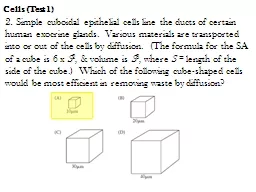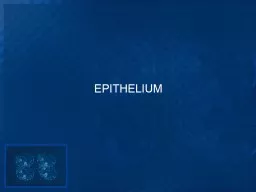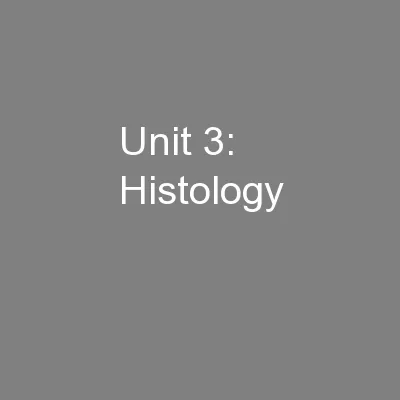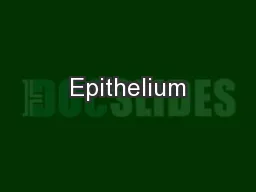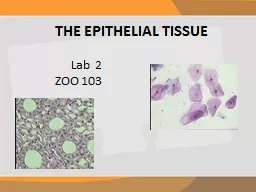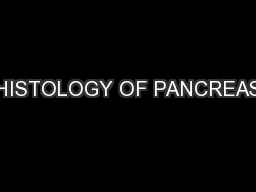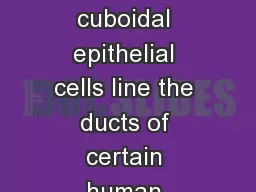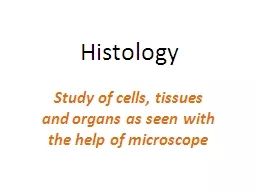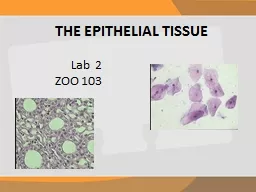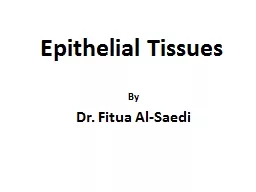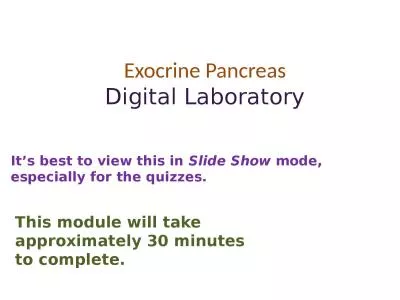PPT-Cells (Test 1) 2. Simple cuboidal epithelial cells line the ducts of certain human
Author : kittie-lecroy | Published Date : 2018-10-30
S 2 amp volume is S 3 where S length of the side of the cube Which of the following cubeshaped cells would be most efficient in removing waste by diffusion
Presentation Embed Code
Download Presentation
Download Presentation The PPT/PDF document "Cells (Test 1) 2. Simple cuboidal epi..." is the property of its rightful owner. Permission is granted to download and print the materials on this website for personal, non-commercial use only, and to display it on your personal computer provided you do not modify the materials and that you retain all copyright notices contained in the materials. By downloading content from our website, you accept the terms of this agreement.
Cells (Test 1) 2. Simple cuboidal epithelial cells line the ducts of certain human: Transcript
Download Rules Of Document
"Cells (Test 1) 2. Simple cuboidal epithelial cells line the ducts of certain human"The content belongs to its owner. You may download and print it for personal use, without modification, and keep all copyright notices. By downloading, you agree to these terms.
Related Documents

